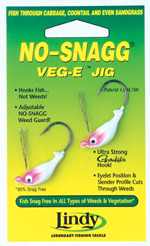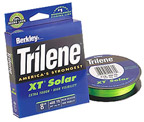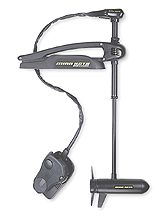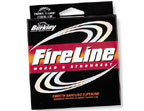
|
||||||||
|
Promotional Team Favorites Lodging food and more 
Free 90 day Risk free trial offer click here 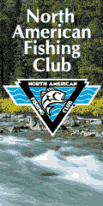
|
By JOHN KOLINSKI
Editor's note: John Kolinski is an eight-time championship qualifier during his seven years of professional fishing on the Professional Walleye Trail and Masters Walleye Circuit. His articles can be read in a number of publications and at top walleye-fishing sites on-line. Given a choice between paddling a canoe upstream against the wind or gliding effortlessly across the glassy surface of a small lake, most of us would choose the latter. The same holds true for dining at a table versus eating off the bumper of a moving car. Walleyes aren't much different in that regard. Give old marble eyes a choice between calamity or calm or smorgasboard and the soup line, and it will take the easy way out every time. The angler who understands and takes advantage of those natural instincts will be rewarded. Often, that means going where others prefer not to go, and fishing cover that many leave untouched. In this case, the end almost always justifies the means. I'm talking timber, and it doesn't have to be tall and terrible to hold good numbers of quality walleyes. A single stump or root, as well as a snarly tangle of twisted treetops can yield big dividends when there are no fish to be found anywhere else. As long as the wood provides a current break or an ambush position, it has the potential to hold more walleyes than a lot of anglers think. My experience with walleyes in the wood is limited to river, reservoir and flowage situations. High water and heavy current chase the fish into the timber on river systems. In reservoirs and flowages, high water can be a factor, but more often the wood attracts and holds baitfish, which in turn gives the walleyes an important reason to locate there. On most river systems with walleye populations, the spring pre-spawn period is a good time to target wooded walleyes. The fish are moving toward traditional spawning sites in tremendous numbers. Under low-flow conditions, they'll simply stack up in deep water somewhere near the place where they'll drop their eggs. High water and fast current are more indicative of spring fishing, and that's when you can find those walleyes tucked in behind stumps and deadfalls near those deepwater holding areas as they seek to escape crowded eddies and fast flows. High water that creeps up onto the shoreline covers up deadfalls, roots and stumps to create these holding places. Typically, I'm fishing just a few feet off shore, and most of the time, I'm catching the larger female fish, which I always return to the water after a few minutes of fun.
And while fishing in the wood is going to cost you a few jigs, you can exercise some damage control by using jigs with wire weed-guards like the Vegi-Jig. If it's especially snaggy, bend the wire farther away from the hook so it requires more force to push it out of the way. If snags aren't a big problem, push the wire closer to the hook so there's less resistence when a fish tries to clamp down on it.
Mississippi that are subject to severe flooding. While most anglers wait for better conditions, I've been able to find a few fish by guiding my Triton 205 right into the flooded live timber atop the islands and shorelines. I suspect the reason these fish relocate in the middle of the forest is because that's the only place smaller baitfish can escape the current in extreme conditions. Understand, however, that most fish have an uncanny instinct for survival, and the first inkling of falling water levels will send them scurrying for the safety of the current. 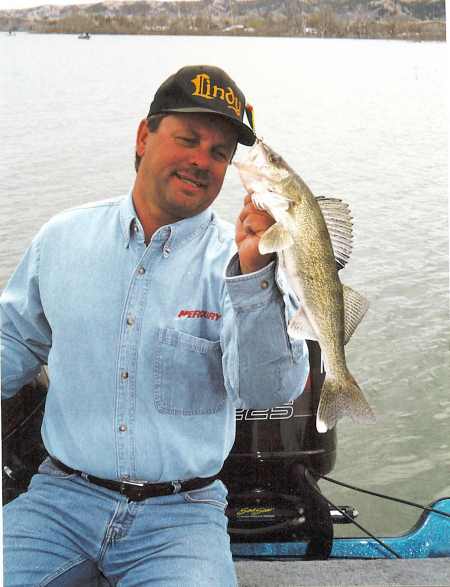 Spring flooding creates one additional sanctuary that walleyes frequent, as well. When the water gets up onto residential lawns, which are usually well off the main channel and away from the main current, baitfish will congregate in these areas to feast on the insects and larvae that come out of the soil. Bigger fish follow, and I've talked to biologists who have taken walleyes and catfish from these areas that are stuffed to the gills with nightcrawlers and minnows. As the season progresses, the wood continues to be important for walleyes as they work their way toward their deep-water summer haunts. Post-spawn can still be a time for high, muddied water and as walleyes trickle back down the system, the easiest place for them to pick off an easy meal is in 2-3 feet of water downstream of a deadfall or stump. I've found walleyes in the wood throughout the summer, though not in the numbers that springtime brings and often in different locations, like shallower flats. Flowages and reservoirs typically feature sections of flooded timber. In the mature ones, that timber has rotted away and left stump fields where the type of prey walleyes seek feel protected. Jigging or casting crankbaits can be effective in this situation, but trolling is often a better option because the fish are scattered across the area.
Fish Clix Banner Exchange Please visit these site sponsors |
|||||||
|---|---|---|---|---|---|---|---|---|
